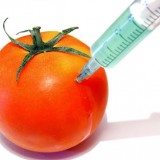In the late 1980s, executives at Monsanto were told, “genetic engineering offered the best prospect of preserving the commercial life of Monsanto’s most important product, Roundup, in the face of the challenges Monsanto would encounter once the patent expired.”
Monsanto’s guys in lab coats began working wildly to modify as many crops as possible to survive saturation in Roundup (trade name for the herbicide glysophate). Meanwhile, guys in lab coats at corporations like Bayer and Syngenta were splicing bacillus thuringiensis (Bt – a naturally occurring bacterium previously used in organic agriculture) into corn and other crops.
Canada and the US were asleep at the switch. By the time activists in Europe were ripping out field trials of GM crops and the EU was implementing a ban, GM canola, corn and soya were in widespread commercial production in North America. How did this happen? Merda taurorum animas conturbit. (Google it.)
Our regulators bought the biotech industry’s argument of “substantial equivalence”. In other words, if it looks and tastes like its non-GM predecessor, it must be the same thing. Therefore, the industry implied, there could be no environmental or health risks. Great – except the tests used to establish this supposed equivalence dealt only with known toxicants and could not properly address potential allergic reactions and other issues of concern.
In 1999 substantial equivalence was dismissed in Nature as a “pseudo-scientific concept” and “a commercial and political judgement masquerading as if it were scientific. It is, moreover, inherently anti-scientific because it was created primarily to provide an excuse for not requiring biochemical or toxicological tests. It therefore serves to discourage and inhibit potentially informative scientific research.”
By 1999, potential environmental risks associated with GM crops (e.g. cross pollination) identified by the Union of Concerned Scientists were already happening. Ongoing biotech industry claims that there could never be any human health consequences failed to persuade the British Medical Association which, in the same year, recommended a moratorium on the planting of GM organisms. This repeated call, reflected the BMA’s concerns “about the impact GM foodstuffs may have on our long-term health”.
Ten years later, as evidence about human health threats continued to mount, the American Academy of Environmental Medicine issued this warning: “Because GM foods pose a serious health risk in the areas of toxicology, allergy and immune function, reproductive health, and metabolic, physiologic and genetic health – and are without benefit – the AAEM believes it is imperative to adopt the precautionary principle.”
Chemical and biotech (or, as they prefer to be called, “life science”) companies view the precautionary principle as an annoying impediment to quick profits. Without the precautionary principle, it is left to university and (in Canada increasingly endangered) government scientists to do this research – after the genie is out of the bottle and the damage is already being done.
In 2010, Watershed Sentinel reported that multiple and increasing allergies associated with GM crops have come to light since the guys in lab coats started running amok with Roundup and Bt. Links have also been made with organ failure and infertility.
Now, as Anne Sherrod reports in the current issue, scientists from the University of Caen report that the Bt toxin Cry1Ab from GM plants kills human cells. Previous research from the university documented DNA damage and endocrine disruption caused by exposure to Roundup/glysophate at concentrations currently permitted in food.
Meanwhile, doctors from Sherbrooke Hospital in Quebec have found Cry1Ab in the bloodstream of nearly 80% of women tested. In the absence of any other identifiable exposure route, the doctors speculate that contamination may be the result of consuming beef fed on GM corn.
Nearly 20 years ago, geneticist Steve Jones warned: “The triumph of human ingenuity has not been unalloyed: because living organisms can deal with new challenges by evolving to cope, genetic engineers, unlike those who build bridges, must face the prospect that their new toys will fight back.”
Amen.


